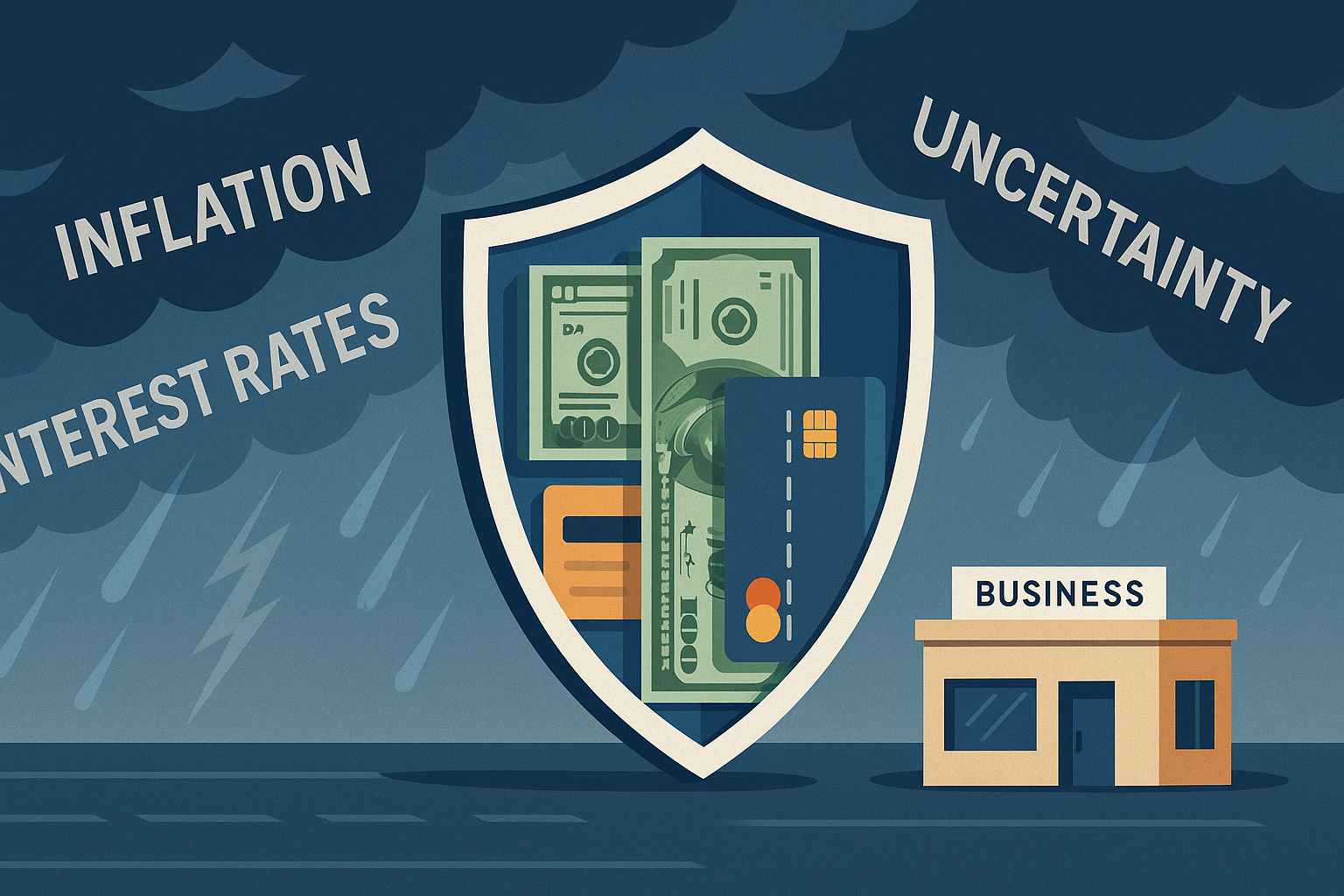1 (800) 584-0324
Business financial planning uncertainty, economic volatility, rising costs, and geopolitical risks have become the “new normal” for many companies. A recent survey found that a majority of small and mid-sized businesses expect higher costs and worry about their ability to access capital.
That’s why business financial planning for uncertainty is no longer optional—it’s essential. By building a financing safety net, you can protect cash flow, navigate disruptions, and stay positioned for growth even in uncertain times. Good planning is essential for any business.
Why Planning for Uncertainty Matters
- Volatile costs: Inflation and supply chain swings impact profitability.
- Credit tightening: Banks raise standards when economic conditions worsen.
- Unpredictable demand: Customer spending patterns can shift suddenly.
- Geopolitical shocks: Global events ripple through financing conditions and trade.
A strong financial safety net helps you avoid surprises and act with confidence.
Business Financial Planning Uncertainty: Key Strategies
1. Build a Cash Cushion
- Aim for 3–6 months of operating expenses in reserves.
- Use profitable quarters to strengthen liquidity.
- Park reserves in short-term, low-risk instruments to preserve value.
2. Secure Emergency Credit Lines
- Establish lines of credit before you need them.
- Revolving facilities provide instant access to working capital in crises.
- Consider a mix of bank credit, asset-based lending, or alternative lenders for flexibility.
3. Diversify Financing Sources
- Don’t rely solely on one bank or product.
- Explore working capital financing, invoice factoring, government-backed loans (SBA in the U.S., CSBFP in Canada), and private credit.
4. Strengthen Supplier and Customer Terms
- Negotiate extended payment terms with suppliers.
- Encourage faster collections with early-pay incentives.
- These moves preserve liquidity without adding debt.
5. Stress-Test Your Financials
- Model best-, base-, and worst-case scenarios.
- Ensure your Debt Service Coverage Ratio (DSCR) remains healthy under stress.
- Identify cost-cutting levers in advance.
6. Stay Flexible With Financing Structures
- Avoid over-leveraging with long-term debt that could strain cash flow.
- Explore revenue-based financing or hybrid models that adjust to performance.
U.S. vs Canada: Safety Net Tools
- United States: SBA 7(a) and 504 loans offer affordable, long-term capital with government backing. Fintech lenders provide quick liquidity in tight markets.
- Canada: BDC offers working capital loans tailored for uncertainty. The CSBFP helps SMEs finance equipment and improvements with lower risk.
Blending Secured and Unsecured Loans
Many businesses discover that the smartest path isn’t choosing one structure over the other but blending secured and unsecured loans for their business financial strategy. For example, a manufacturer might finance heavy equipment with a secured loan while also maintaining an unsecured line of credit for seasonal working capital. This approach balances cost efficiency with agility—secured debt anchors long-term investments at lower rates, while unsecured credit provides fast access to liquidity. Blended strategies also diversify risk: if collateral values decline or covenants tighten, unsecured lines can cushion operations. The key is aligning each facility with its purpose and matching maturities to cash-flow cycles.
Pros and Cons of Building a Financing Safety Net
Pros:
✅ Increases resilience to shocks
✅ Provides liquidity when banks tighten lending
✅ Builds confidence with employees, suppliers, and investors
Cons:
❌ Cash reserves can reduce reinvestment in growth
❌ Credit lines add unused fees if not tapped
❌ Over-preparation may tie up working capital unnecessarily
External Resources Worth Bookmarking
- U.S. Small Business Administration: Collateral & Guarantees
- Government of Canada – Canada Small Business Financing Program (CSBFP)
- BDC (Business Development Bank of Canada): Secured vs. Unsecured Loans
- Investopedia: Business Loan Types and Terminology
Worried about business financial planning in uncertain times? Agile Solutions helps companies in the U.S. and Canada secure safety nets with cash cushions, credit lines, and diversified funding strategies.
👉 Book a consultation today at agilesolutions.global or email us at info@agilesolutions.global
#BusinessPlanning #FinancialResilience #WorkingCapital #Uncertainty #AlternativeLending #SBA #CSBFP #PrivateCredit



